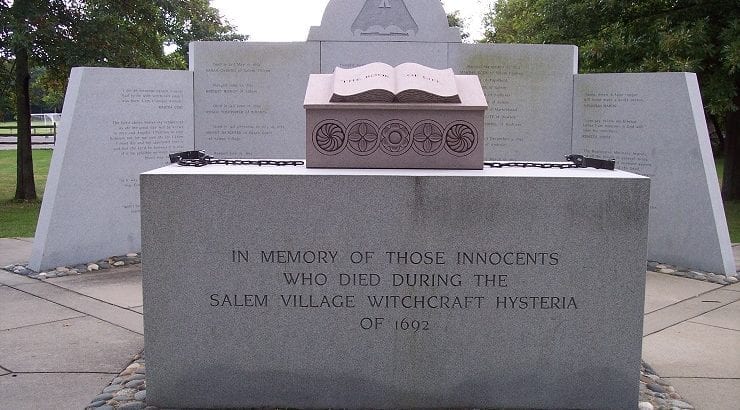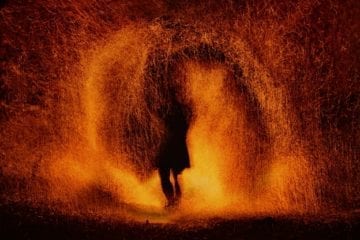It is not a few times that history has “clashed” with the socio-political situations of each era.
Many times these conflicts have turned events from pieces of history into myths…
The same thing happened with Salem’s witches.
A story that led mankind (once again) into cruel and heinous acts.
In 1692, in Massachusetts, USA, a trial was to become one of the notorious events of colonial history.
The “Salem Witch Trial” used as a reason to execute dozens of villagers with the charge of magic.
Beyond any doubt this shows, but also proves that…
Religious fanaticism (and all fanaticism), false accusations, and government intrusion into personal freedoms are becoming…
Weapons of mass destruction!
In Rock and Metal music, there are a few who refer to “witch-hunting”, but in this article, we will deal with Rob Zombie’s “American Witch“.
But let’s look at the real facts before the song …
The beginning
Two hundred years after the start of the “witch hunt in Europe” and the release of the now infamous, “Malleus Maleficarum“, two underage girls showed strange symptoms.
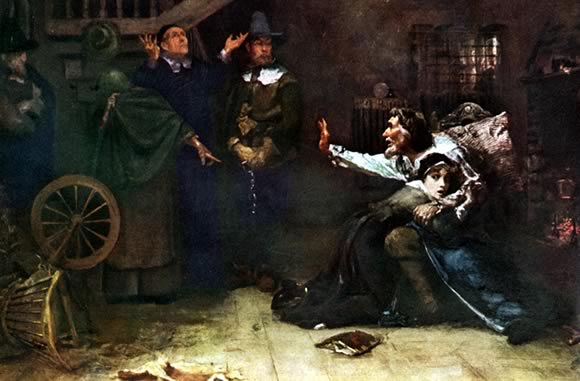
Before we proceed and in order to understand the events of that time in Salem, we need to set the time frame.
During the 17th century in most of the Puritan colonies in the New World, residents were convinced that they were in a constant battle with Satan.
Satan, according to historians came from the smallpox epidemic, from fears of Native American tribal attack and Salem Village’s dispute with neighboring Salem Town.
Returning to the story…
The underage girls, Betty Parris (age 9), and Abigail Williams (age 11) were examined by a multitude of physicians, without a diagnosis.
Then one of the doctors, William Griggs, decided that the girls were possessed.
Symptoms included: screams, blasphemies, convulsions, mysterious pleas, and a state of ecstasy.
Gradually, these symptoms occurred in other girls in the city as well.
Reverend Samuel Parris, Betty’s father, sought help from neighboring towns, and other residents began pressuring the girls to name people who were dealing with “devilish deeds“.
The suspects turned to an Indian slave, Tituba, from the Barbados Islands, who mastered the “magical” cult of Obeah.
The “witch” Tituba
At that time any contact with religions beyond the established one was strictly forbidden.
The girls, however (and not only them), would often visit Tituba to tell them about the future or consult her about what interested them.
According to recorded stories, Rev. Parris saw her take something out of the ashes in her fireplace.
He asked to explain what this was, and she replied that it was the “witch’s sweet” and made it heal the girls.
She didn’t believe her and, beating her brutally (perhaps torturing her for days), she was forced to admit that she was responsible for the girls’ situation.
The girls in their panic and fear, in order to avoid any (harsh) punishment, confessed that some people in the city had made a deal with the Devil.
It should be noted that the punishments included were: public stoning strikes by relatives and incarceration without food and water for days.
An irrational pursuit begins, targeting anyone who did not follow Salem’s puritanical patterns faithfully and without question.
The first arrest warrants, for people who supposedly practiced magic, began to be issued.
On February 29, 1692, Tituba, Sara Good, and Sara Osborne are arrested.
Good was a beggar, the daughter of a French hotelier who committed suicide when she was still a teenager.
Osborne was an elderly woman who had not been ordained for a long time.
The trial begins
The Court met in the city on June 2, 1692, with William Stoughton, the new governor, as supreme judge.
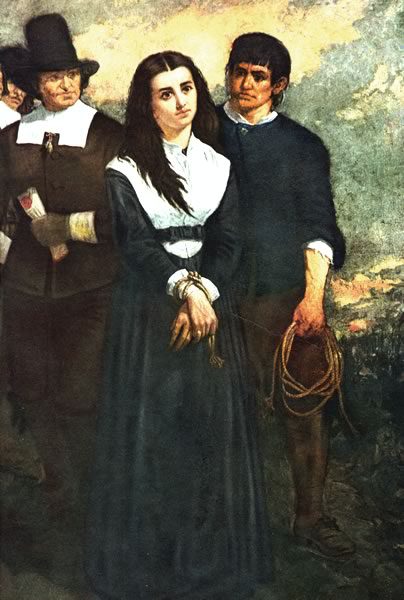
A judge, without a trace of pity and thirst for power.
In her “statement”, Sara Good denied any connection with magic.
One of the underage girls, at the urging of her relatives, starts the spasms and utters irreverent words and howls.
The room was filled with voices from residents who claim that the devilish spirit that protects Sarah is attacking them.
One woman, Martha Corey, got up and laughed at the girls’ theatrical “show” (she was later accused and sentenced to death herself).
The same was repeated in the apology of Sara Osborne and Tituba, who was the only one of the three to confess.
Her confession, as well as the admission that others are dealing with magic, caused panic and hysteria in Salem, and began the horrible “witch-hunt“.
The three women were charged with witchcraft and were sent to prison on March 1.
By June, more than 100 people are convicted.
The trials also extended to neighboring cities, beyond Salem Village and Salem Town.
The prisons of Salem, Boston, and the surrounding areas are overcrowded.
The “opportunity” that everyone awaited then came… It was time to apply the sentences!
The penalties
The first convicted was Bridget Bishop, who was executed on June 10 in Gallows Hill.
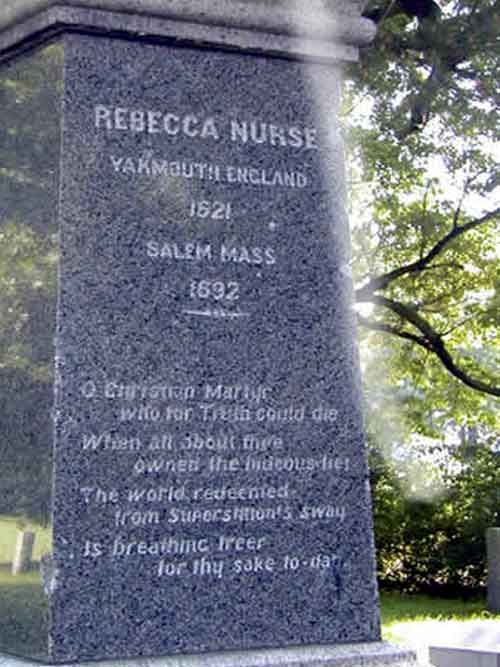 The trial of Rebecca Nurse and 40 other women followed, including Sara Good (Sara Osbourne had already died before her final trial).
The trial of Rebecca Nurse and 40 other women followed, including Sara Good (Sara Osbourne had already died before her final trial).
The court hesitated to convict Rebecca Nurse, as she was a respected Salem resident.
Following Judge Stoughton’s intervention, the Nurse case was reconsidered, with no result, and was finally executed on 19 July.
In August, a third grand trial was held with six defendants sentenced to death.
Elizabeth Proctor avoids condemnation because of her pregnancy.
Tituba, though was the first to admit that she worked with Satan, was not executed as a “hateful witch“, but remained in prison for thirteen months.
She was eventually released when an unknown person paid the price for her release and took her away from the village.
In September, the court was held for the last time and announced 15 more convictions.
Those who confessed their guilt and betrayed others escaped execution.
During the summer, a total of 19 people were executed, including a minister and a former police officer, who refused to continue the arrests of alleged witches.
It is worth mentioning that out of all those arrested, only five were men.
As far as convicts are concerned, historical sources disagree on the exact number of people.
Return to “reality”
When the girls began to report judges, the communities started doubting the truth of the charges.
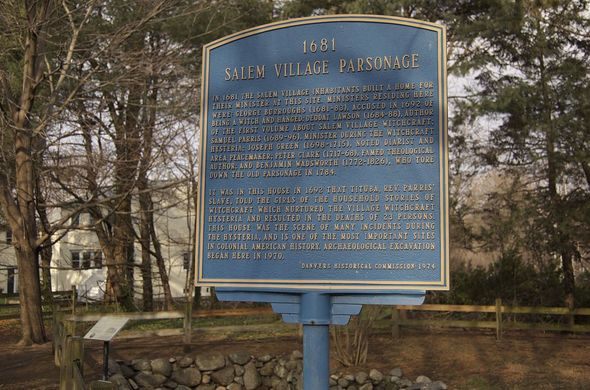
At that time, the prevailing view was that judges were protected by God himself and did their job in His name, so it was impossible for them to practice magic.
On October 29, after pressure from prominent citizens, the court was closed.
In January 1693 amnesty was granted to those convicts who had remained alive.
Legend has it that witches were burned alive, but in Massachusetts, where the judicial system operated under English law, it was forbidden.
Those who were sentenced to death died by hanging on the slope of Galloway Hill.
Except for Giles Corey, who did not accept the indictment and died after being buried under heavy stones.
The ending
The girls’ involvement in all this has not been clarified.

Among the theories is the ergot poisoning of the fungus Claviceps purpurea, which mainly develops in the rye.
Concerning Abigail Williams, historians of the time believe she did it because of the attention she received.
Although it played an important role in the first trials from March to May, she gave her last testimony on 3 June 1692.
She then “disappears” according to the court records and no source tells what happened afterward.
Ann Putnam, 12 years old at the Salem trials, was one of the first girls to develop symptoms similar to B. Parris and A. Williams.
Accusing inhabitants of the village of magic, a testimony that condemned many of those arrested.
However, she was the only one who, 14 years later, admitted in written remorse, that she had lied in the trials of 1692, as she was “seduced by Satan“.
Sara Good, one of the first three women accused of magic, repeatedly denied her guilt.
The Rev. Nicholas Noyes pressed her to admit that she was indeed a witch.
Later regretted participating in the trials and did what he could to help the families of those convicted and executed.
The last words of Sara Good foreshadowed his death:
“The more I am a witch, the more you are a magician. If you take my life, may God give you blood to drink. “
Twenty-five years later, the Reverend is said to have died of internal bleeding after drowning in his own blood.
Rob Zombie – American Witch
His music has been largely influenced by the myth around that time, combining some historical events.
Zombie in this song refers to 20 innocents who were executed during the “Salem Witch Trial“.
Influenced by the myth of the story, it refers to women who were considered witches and burned alive.
They carried the mark of the devil according to the confession of the accusers.
Characteristic lyrics
“…Alone on the hill and ready to die, Cancer of darkness – blackened eye,
The mark of the wolf and the sign of the calf, Angels bleed down above the raft,
We all pray for – 20 innocents, We all bow down – 20 innocents, We all hang high – 20 innocents, We all accused – 20 innocents,
Do you want to know where their dreams come from? Some showed the faith and some showed none…”
The song was released on March 28, 2006, in the “Educated Horses” album.
***
The widespread warfare of the Church and the “reprehensible” citizens in the patterns of puritanism against the different, proves very clearly that …
The Devil is nothing more than the definition of the word “fear” in the sense of any authority that wants to control the people.
Robert Muchenbled in “A History of the Devil: The 12th – 20th Centuries” explains:
“The identification of any heretical conduct with the devil is a purely ecclesiastical conception, those which had nothing to do with devil worship.
In the general misery of the times, which will last from 1562 to 1648 (religious wars and the Thirty Years), the devil will also be a convenient interpretation of instability.
An interpretive tool that the Protestants will not get rid of either.
After all, Salem’s witches belong to the Protestant persecutory tradition.“
According to historian George Lincoln Burr, “Salem’s magic was the rock on which theocracy was destroyed.“
***
Notes:
- Puritanism:
It is a dogmatic religious position developed mainly in England and America in the 16th and 17th centuries within the Anglican Church.
This tendency emphasized the need to rid worship and ecclesiastical practice of non-Biblical additions.
Puritanism stems from the teachings of Calvinism and Zwinglianism.
It was a specific mentality that governed individual human behavior and expressed a high degree of Conservatism.
- Malleus Maleficarum:
It’s the most famous and important treatise on the persecution of witches that came from the witch hysteria during the Renaissance.
A comprehensive witch-hunter’s manual, first published in Germany in 1487 and has been reprinted repeatedly throughout the world.
A manual that has been playing a key role in witch trials in Europe for over 200 years.
- Claviceps purpurea:
This fungus is the cause of a type of food poisoning, which erupted periodically as an epidemic during the Middle Ages, but also until the beginning of the 20th century.


